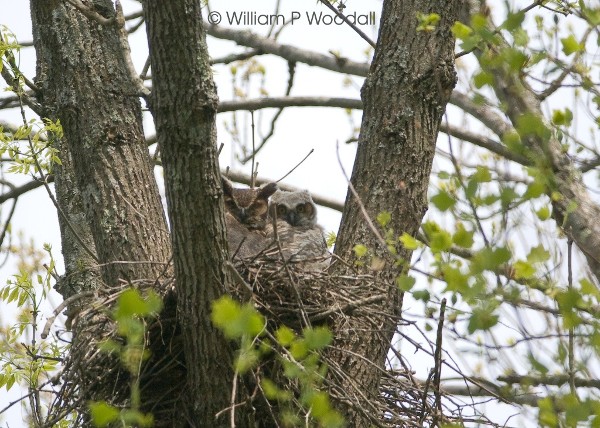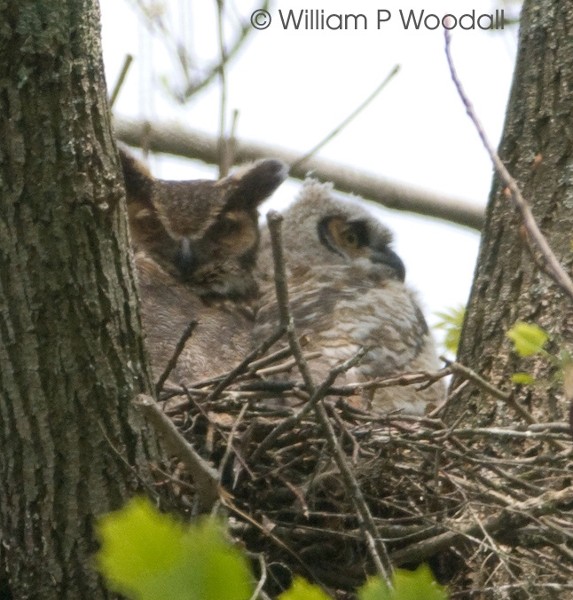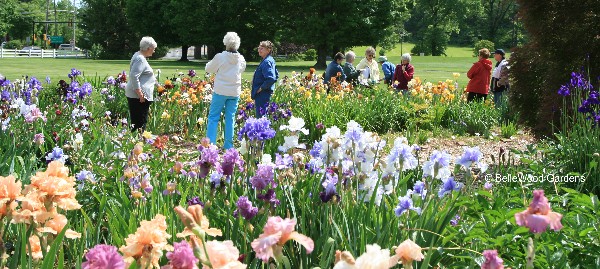
If you have any comments, observations, or questions about what you read here, remember you can always Contact Me
All content included on this site such as text, graphics and images is protected by U.S and international copyright law.
The compilation of all content on this site is the exclusive property of the site copyright holder.
Fourth Week: A Rainbow of Iris [Sunny Iris; Iris Blues; Pretty in Pink; Iris Fancies; Siberian and Other Beardless Iris]
Third Week: Getting Potted; Moore in America: Monumental Sculpture at the New York Botanical Garden
Second Week: Darwin's Garden, Revisited; The New York Botanical Garden, Redux; Die Fledermaus
First Week: Hooters; Down South; Wisteria at Van Vleck; At Van Vleck
Late in May is when bearded iris really burst into bloom. Some, especially the dwarf bearded iris, come a little earlier. A few are remontant, repeat bloomers that will flower again, and again, and again. That is, they will repeat if the gardener in charge makes sure they have adequate moisture and additional fertilizer throughout the summer. But most of these ever-popular rainbow hued flowers add their diversity of color to the garden in May. When formal borders were in vogue they'd have a space devoted just to bearded iris, a strip behind edging & creeping plants, and low growing perennials. Of course, such elaborate displays were more often found on grand estates, maintained by a supervising head gardener and the staff. Homeowners, then and now, find space in the border for bearded iris, unwilling to bypass their lush flowers.

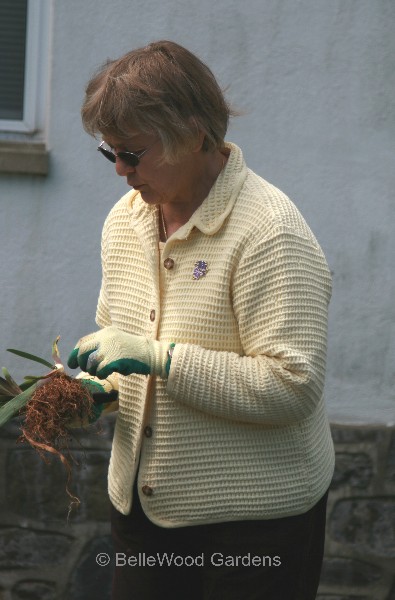
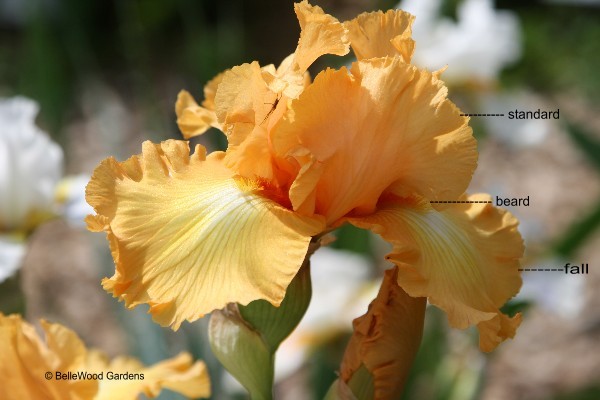
The three upward-facing petals are called the "standards"
while the three lower, drooping petals are named the "falls".
And each of the falls has a fuzzy beard, a bee guide that indicates where to go
for a reward of pollen and nectar and incidentally, pollinate the flower.
Clearly, it pays to advertise. I guess you could say that the bee guides
(and many flowers have them, not just iris) are the equivalent
of McDonald's golden arches, visible from afar and announcing "Come and get it."
Carol Ann first began maintaining the iris garden at the Henry Schmeider Arboretum of Delaware Valley College in 2001. A few years later, in 2004 and 2005 she redesigned the original assortment of rectangular beds into the current 80-foot-diameter circular garden. Four paths intersect three ovals, providing a labyrinth feel to the design, with a tall, wide spreading, deep, deep red leaved century-old cutleaf Japanese maple at its center.
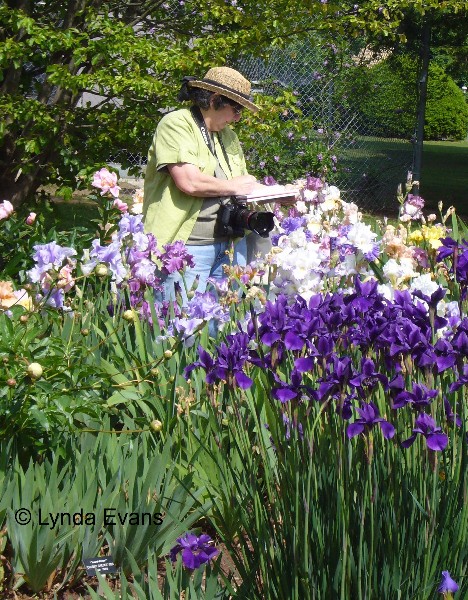
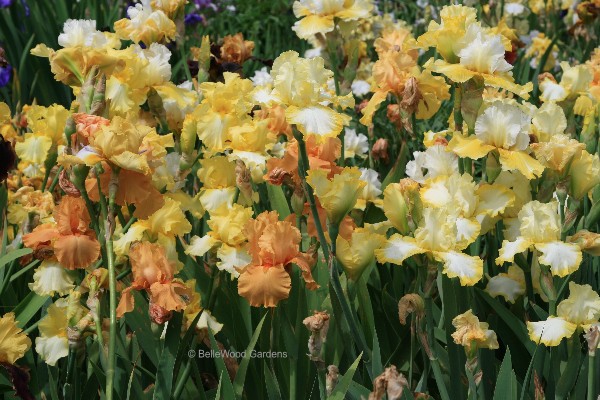
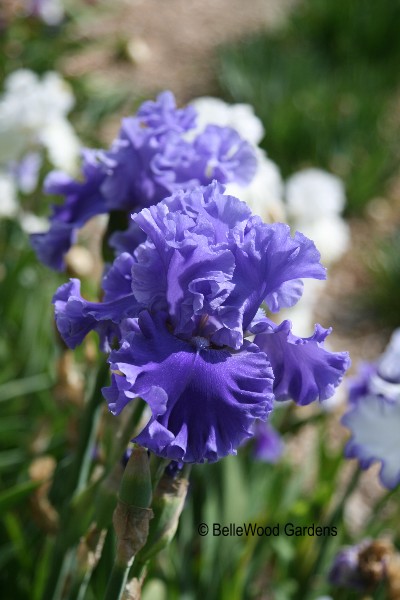
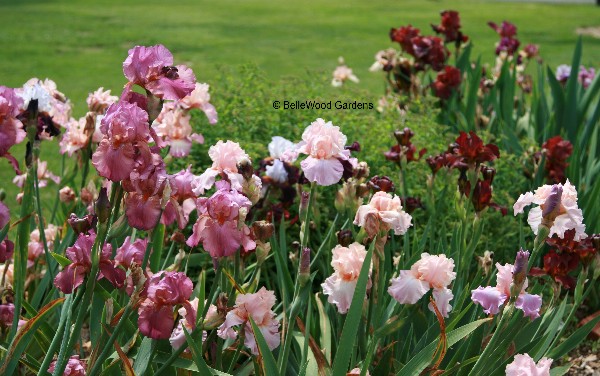
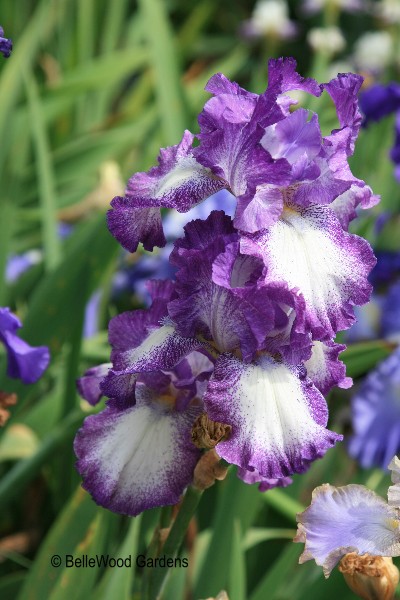
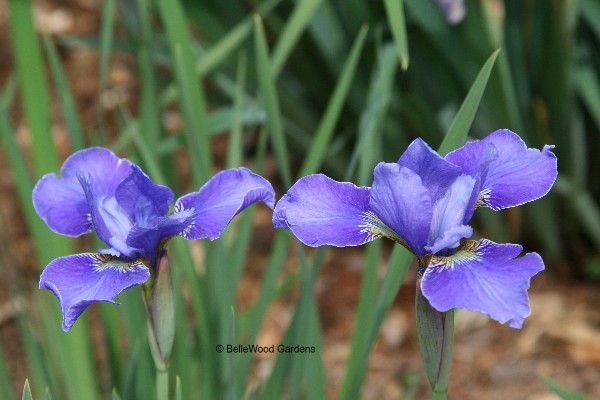
What to say in conclusion? Visit the Carol Ann Moyer Iris Garden at Delaware Valley College.
It is free and open to the public 365 days each year, with peak bloom in late May.
Join the Delaware Valley Iris Society. Think about adding iris to your garden.
Late July and August are good times to transplant or plant, if they are not already there.
Iris make a great partner for other perennials that bloom at this time of year.
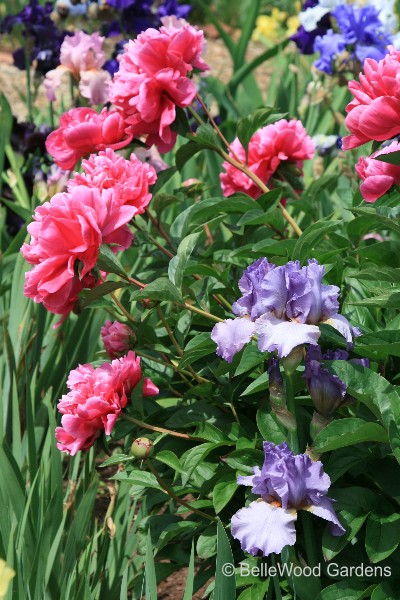
The public relations department at the New York Botanical Garden offered me an invitation to this morning's press preview for the Henry Moore in America exhibition. I would be at NYBG today but alas, it is to teach a class on fabulous foliage for the shady garden. Simple, I thought. After class I would quickly dash about on my own. A look at the weather forecast offered up a prediction of rain. With 20 monumental sculptures and acres of ground this was not looking like a good option. Nothing loathe, I asked if it was possible that someone could shuttle me around in one of the little electric carts. What was there to lose - at worst they'd say no.
I arrived to find a press packet waiting for me and note suggesting I call when class was over. Lovely. It was indeed raining by 3:00 p.m., a soft steady drizzle. Made the call, left my slides and books and stuff in Nick's office and off we went in the rain. I must say that I felt like royalty. "Could you move the cart up a bit please." And we'd inch forward until I said stop. Back it up - same cooperation. Overcome with excitement and leap out of the cart, and Nick would be after me with umbrella.
We passed perhaps a dozen people in the hour we spent criss-crossing the grounds, and most of them were staff. I thought I'd be making the best of a marginal situation, looking at the sculptures in poor light and in the rain. Rather, had I planned for an extraordinary experience I could not have done better. The weather created a unique opportunity, soft light and a whisper of rain, that is indeed part of the Moore in America event. I now believe that any time is the right time for a visit to this exhibition.
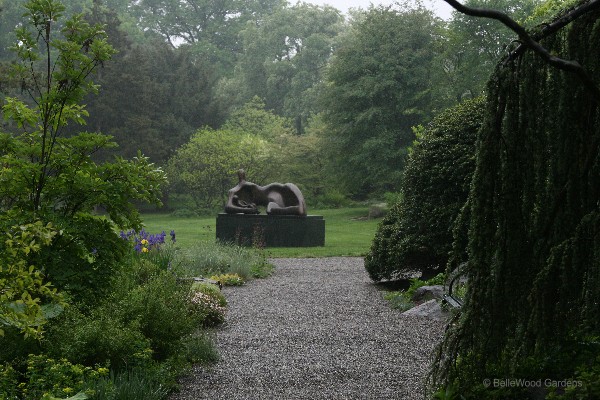
Although throughout his career Henry Moore had worked in the open air, he was already fifty when he began creating magnificent, monumental sculptures intended for siting in the landscape. I cannot imagine how static and imprisoned these large bronze works must appear if enclosed in a gallery.
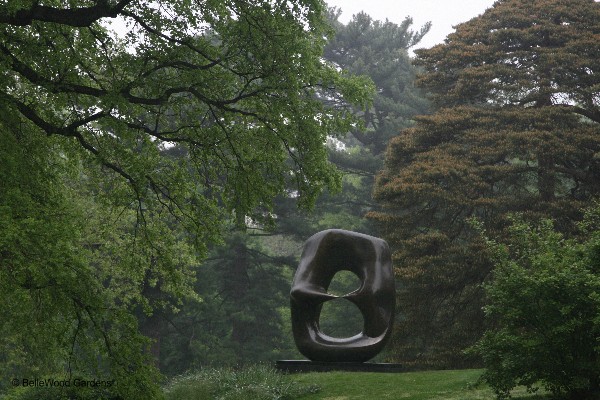
With their backdrops of trees and shrubs, massive glacial rock outcrops, with the interplay of weather and changing light as the seasons will cycle from late spring into summer and turn to fall, this surely must be what Moore himself envisioned for his works. The exhibition will, unfortunately, conclude before winter's snow is a possibility.


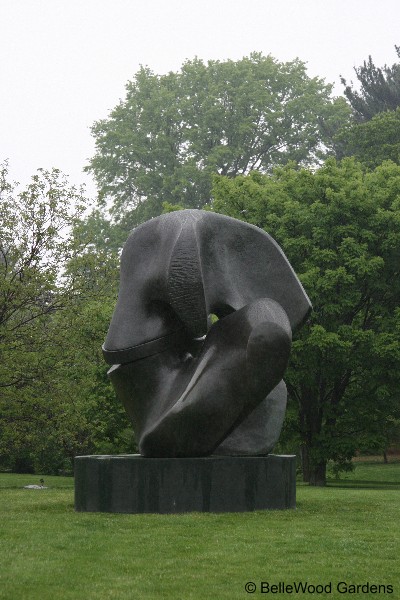
It reminds me of the vertebrae, bones, and stones that inspired Moore. On display in the library building's Orchid Rotunda are found objects, several of his maquettes, and tools from the artist's studio, offering a rare glimpse into the creative process from inspiration to massive, multi-ton bronze reality.
Can you imagine what it must have been like, when Todd Forrest, Vice President for Horticulture and Living Collections at NYBG, and staff members from the Henry Moore Foundation in Hertfordshire, England chose where to place the different sculptures, envisioning a location that gave each sculpture its own pride of place and one that would enhance it with the changing seasons.
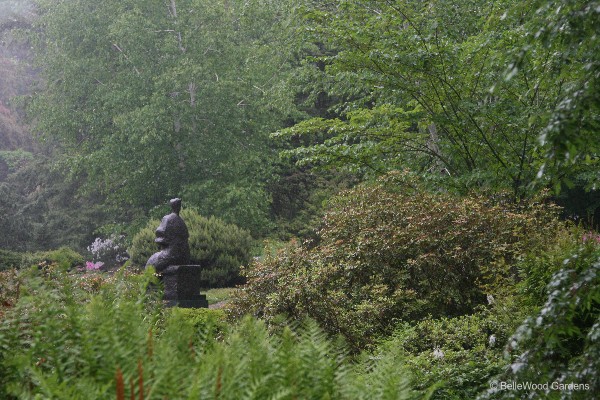

.
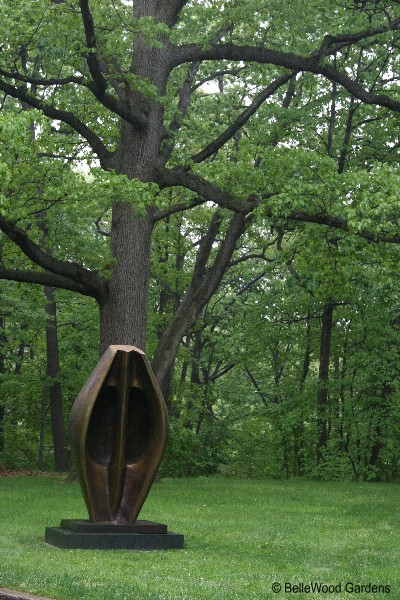
Come visit, and decide for yourself. The Moore in America exhibition opens to the public on May 24, 2008 and will close on November 2. Ample time to visit once. After the first visit, you'll want to come visit again. I know that I do.
Today was my class on container gardening at Rutgers Gardens. in, New Brunswick, New Jersey. It's always popular, and with good reason. The first part is lecture, wherein I talk about different kinds of containers and what goes in them, from potting mixes, fertilizer options, water-holding crystals, plants and their combinations. Then the fun begins. Students have the option of bringing their own containers or purchasing one at the class. Bruce Crawford, director of Rutgers Gardens has the classroom well supplied with a bale of potting mix, slow-release fertilizer, the water-holding crystals, and tray after tray of annuals. The course fee includes potting supplies and each student has their choice of four plants, with additional plants available for a modest $4 apiece. (I should mention that Bruce also supplies us with coffee, bottled water, mini-muffins, and bagels. Did I mention that this is a great class!)
First thing is to apportion out the water-holding crystals into rinsed paper coffee cups and add some water to swell them. Next, cover each container's drainage hole with a coffee filter. That keeps soil in but allows excess water to drain.
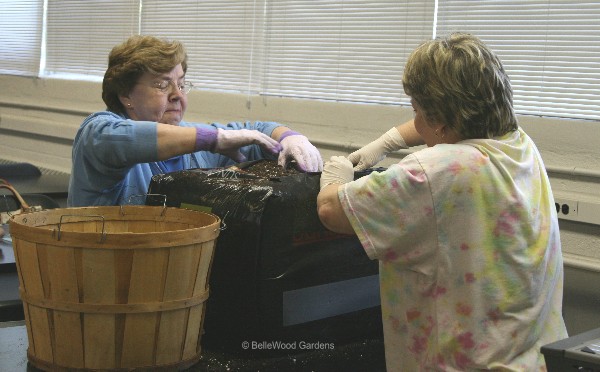
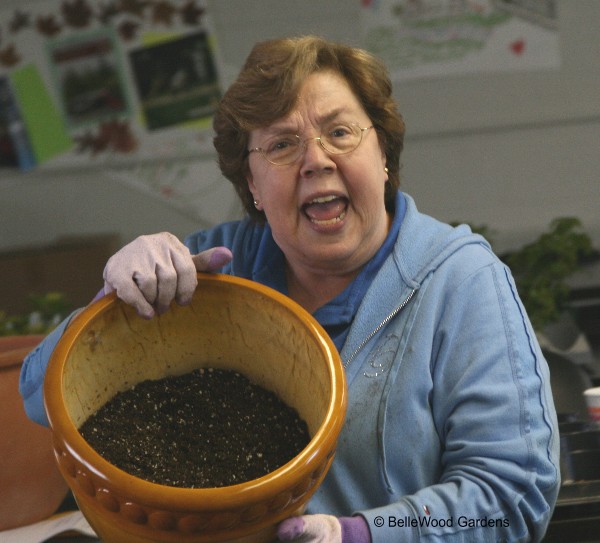
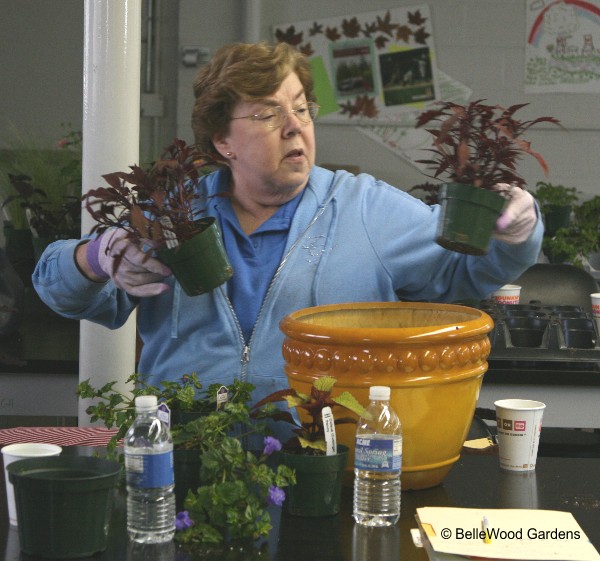
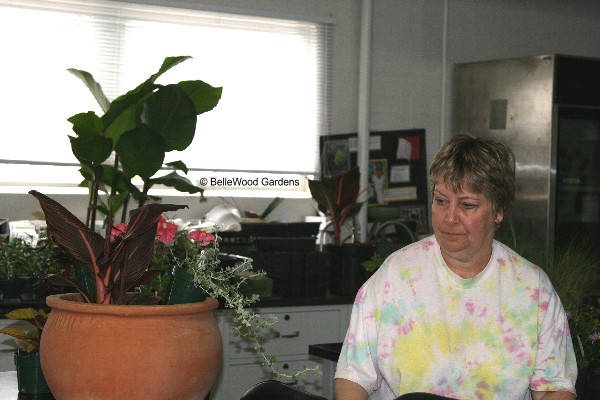
Pat and I are in the same garden club. She has a vet tech degree, is a bat researcher, and has been working with bats for 15 years. Fascinated, I wanted to come and see what she does. First it was cold weather and the bats were hibernating. Then she said that she only had big brown bats, nothing interesting. I assured her that while she might think them as ordinary, I would find any bat interesting. So we picked a day and over I went to get up close with big brown bats and learn more about the fascinating little "flutter mouse" of the night. Supposedly, by the way, their name of bat comes from Old Norse ledhrblaka, leather flapper. That was shortened to bakka and then became bat.
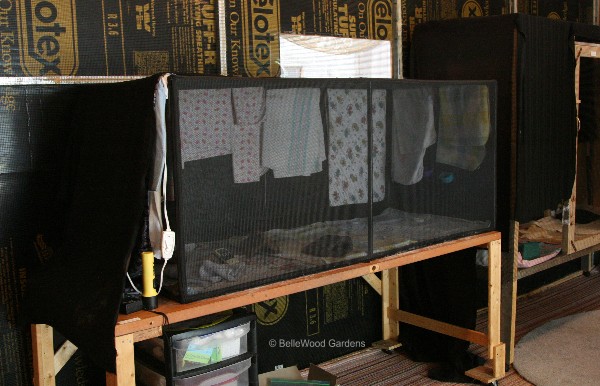
Baby receiving blankets are folded and hung along the back wall of each cage. The bats climb behind the blankets to roost and sleep. Pillow cases cover the floors. In the wild they'd roost in hollow trees or beneath loose tree bark, in the crevices of rocks or in man-made structures such as attics, barns, old buildings, eaves and window shutters. Mother bats live in communal colonies of 20 to 300 individuals while pregnant and nursing. It is bachelor males who might come to live, one or two at a time, in a bat house you've installed.
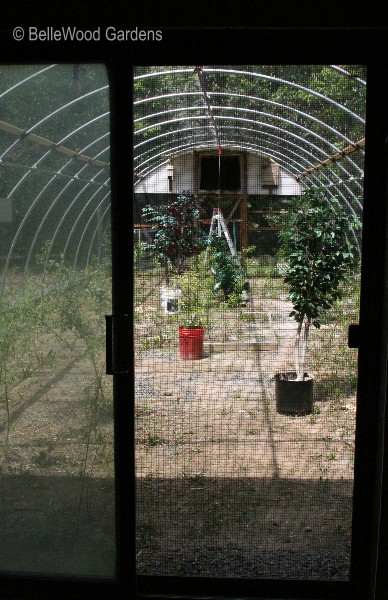
A recent addition is a flight cage, 48 feet long, using a hoop house framework covered with mesh rather than the plastic typical of a greenhouse for growing plants. It's important to secure the base, and Pat's husband installed it with mesh into the ground. Not only can bats fit through minute openings, so can snakes. And black snakes, for example, will eat bats if they can. So will great horned owls and barn owls.
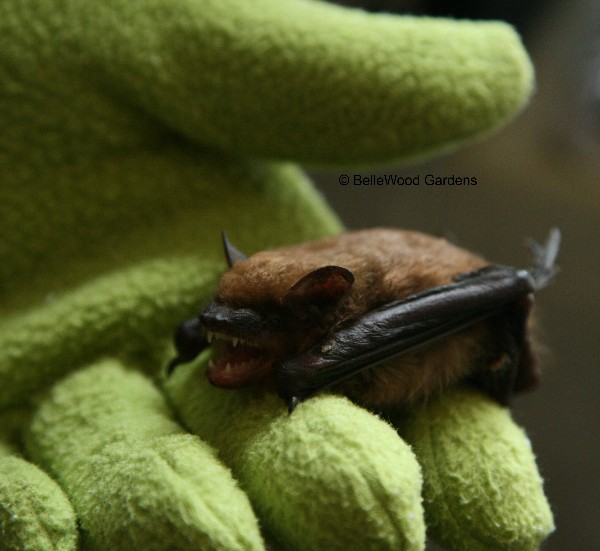
Here's a big brown bat. Clearly, "big" is a relative term. He weighs the same as 3 nickels. Fattened up for his dormancy, from mid-October to mid-March, he'll gain another nickel's weight. And a newborn pup weighs in at a penny. Big browns in the eastern United States have two to a litter, those in the West have only one. They mate in autumn but hibernating females delay fertilization so that after a two month gestation period the young are born in late May or early June.
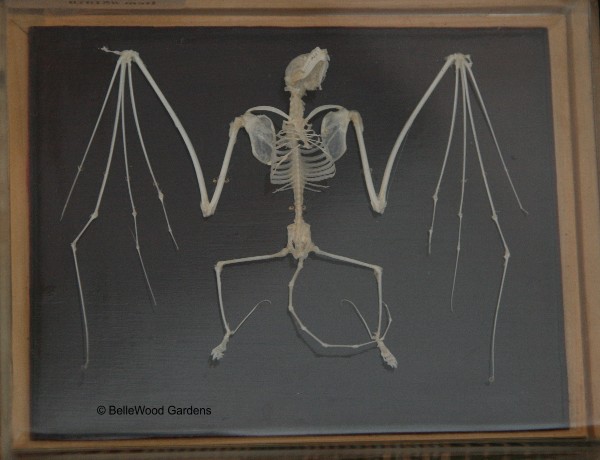
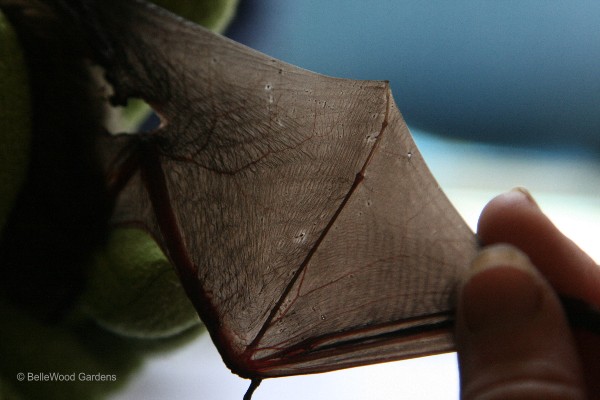
The wing itself is a delicate membrane, a couple of layers of epithelial cells and some blood vessels. See the tear near his body? This poor boy just recently damaged his wing and cannot fly until it heals. In the wild, he'd die. Bats eat a tremendous number of insects each night: a heavy feed early, at dusk. A nap, a good dump, and another feed before roosting the day away. Did you notice the sharp teeth of the bat in Pat's gloved hand? (She always wears a glove when handling a bat.) While they eat mosquitoes, zillions of mosquitoes, and moths, bats also eat beetles. Those sharp teeth help them crunch through a beetle.
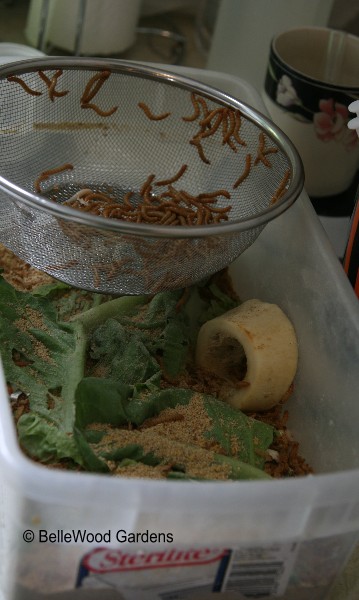
It's been learned that in captivity what bats really like to eat and what they thrive on are mealworms. Pat goes through about 15,000 mealworms each month. That will feed about 20 bats. In the cold season, even during hibernation when she keeps the temperature down around 44� Fahrenheit bats - especially males - will occasionally rouse and feed. At that time consumption drops down to about 5,000 mealworms a month.
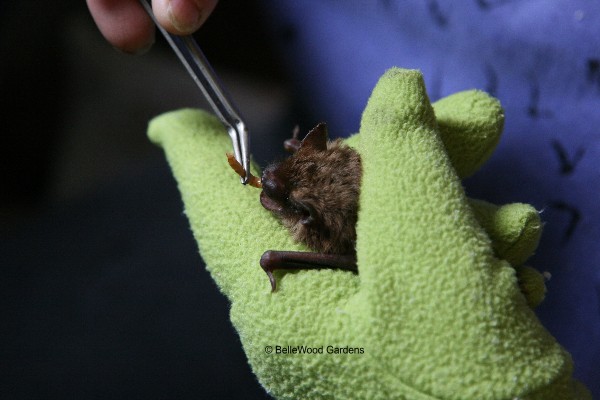
Bats that are self-feeding can scrunch up mealworms on their own. Pat will introduce them to this new food by removing the mealworm's head and offering it up with a pair of tweezers. But some bats need more care. These get what Pat refers to as "Bat ice cream". It consists of frozen mealworms, veal and banana baby foods, a vitamin/mineral gel and a dash of flax seed oil, all tossed into a "Magic Bullet" blender. And apparently bats find this especially yummy. It's fed with a syringe without the needle, squeezed out and eagerly lapped up by the bats.
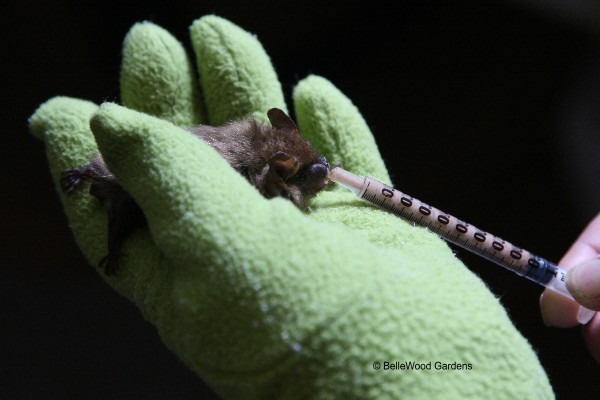
What else did I learn? Big brown bats can live for 25 years. They have adapted well to the changes people have made to the landscape, and are often found in in towns and cities. They forage around both urban and rural street lights, and find houses and barns and under bridges an acceptable alternative to trees and caves. And I learned that bats can purr! After he had his bat ice cream Pat held the little fellow near my ear and I could hear his contented humming.
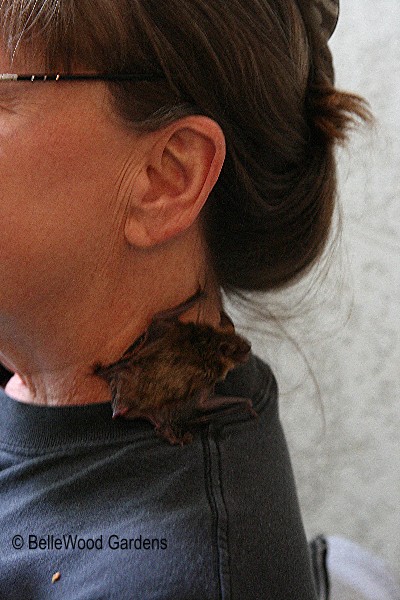
Bats just like to find high places. This little fellow has no interest in tangling himself in her hair. And all he's interested in eating are insects, scads of mosquitoes and moths in the wild, meal worms in captivity.
Pat told me, "When I get in a big brown bat who'll be a keeper, I try my best to get him or her a bat buddy. They are such a social species that I feel giving them some company is a quality of life issue. Of course, once they have company and are self-feeding, I don't intrude on them, other than periodic weigh-ins and such. I think the reason my one male big brown wound up being in a fight is that I kept him with two - rather than one - other companions. I 'd assumed that since they were all juveniles and had known each other since last summer, there'd be no problem. My usual MO is to place only two male bats together on neutral ground (a cage neither one is familiar with) and to give them the biggest cage with the most hiding places possible. I also put out more food and water dishes than there are bats. This has always worked in the past. Females just naturally seem to enjoy each other's company. They will usually be roosting snugly together after a day or so.
"Red bats, on the other hand, are a solitary species. I've had some absolutely endearing reds who purr as soon as I pick them up. They especially enjoy being hand-fed, groomed (I have several tiny brushes I use) and then falling asleep (sometimes during grooming) on my neck or shoulder. I once accidentally took one for my two mile morning walk with a friend, because he'd gone to sleep under my jacket. He apparently enjoyed the trip - didn't awaken or make a sound. So, yes, reds are affectionate. I've always found that interesting, since they have no use for other bats and are often 'hyper' in captivity to the point where they injure themselves - yet now and then there'll be one you want to adopt as your own child.... "
Fascinating. Absolutely fascinating. I've always liked to see the fluttering silhouette of bats at dusk as they swoop and dart against the sky, scooping up mosquitoes. Now I feel I've had a bit of an introduction into their secret nighttime world. Here's hoping I have another chance to visit again, and learn some more.
Two weeks, that's all it has been since I was last here. Then, it was a glorious spring day. Today, it is a gray, wet, overcast one. Two weeks, at this time of year, has major changes in the garden as plants come and go and new ones unfold into bloom. Karl Foerster, the eminent German horticulturist who gave us such wonderful plants as Rudbeckia 'Goldsturm' thought that "Spring" and "Summer" encompassed too much. He preferred to divide the seasons into "First Spring" and "Second Spring", and the same for summer. Makes sense to me.
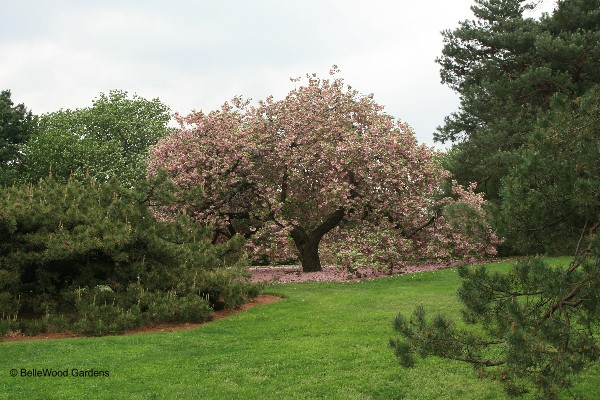
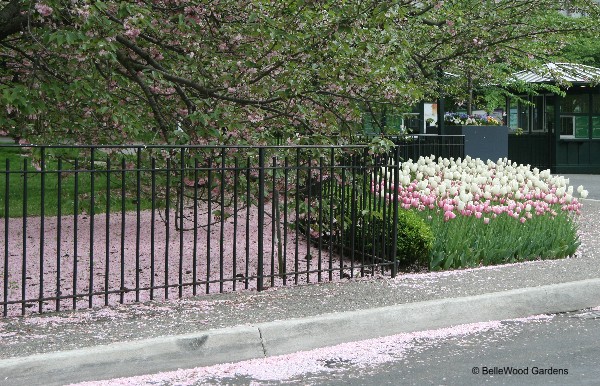
.
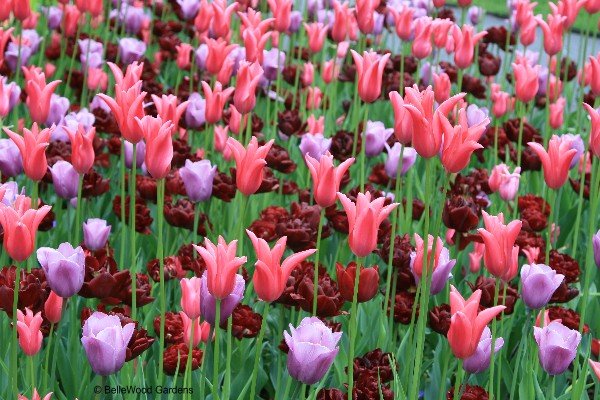
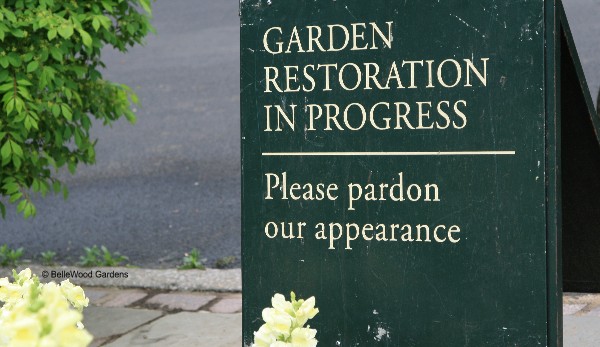
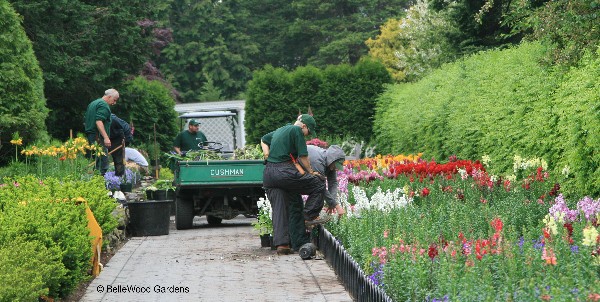
.

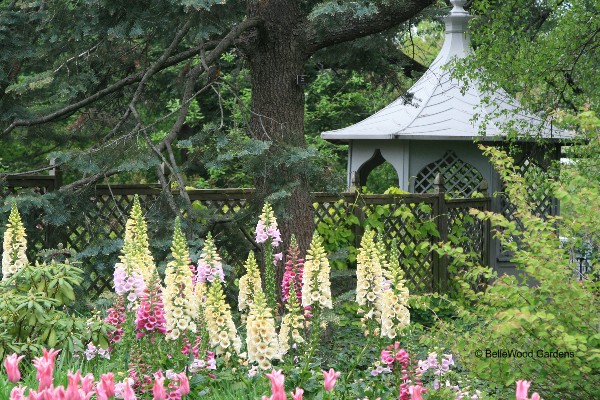
I had a class to teach at the New York Botanical Garden today. In hope that the traffic gods would be kind to me, I requested a press pass so I could revisit the Darwin's Garden exhibition in the conservatory. There was heavy traffic on Route 78 in New Jersey, and the George Washington Bridge was also cluttered with cars. None the less, I still managed to arrive with 30 minutes to spare. A quick hike over to the conservatory, and in the door a few minutes before official opening time.
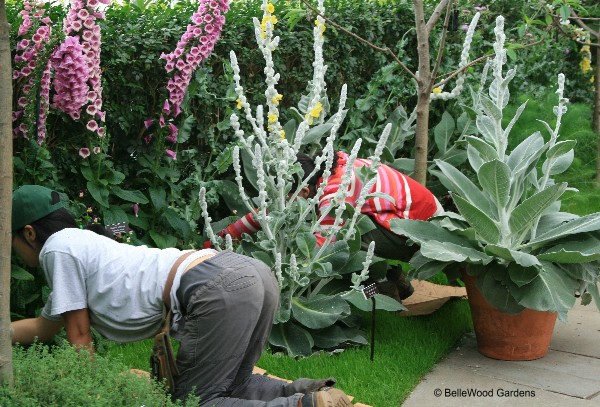
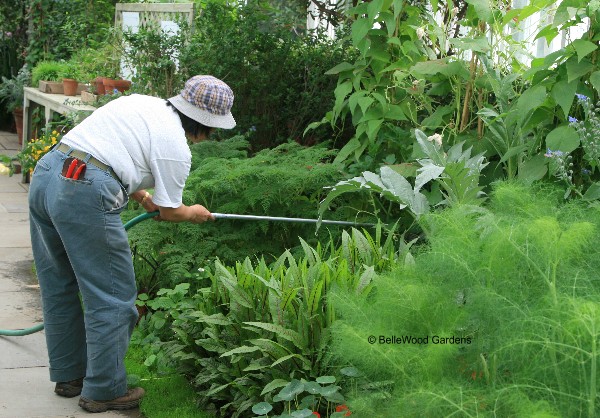
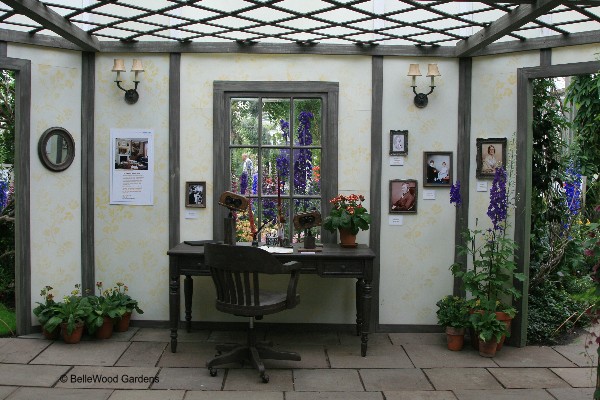
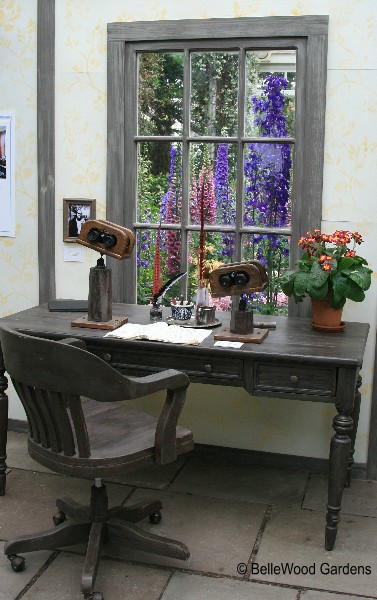
.

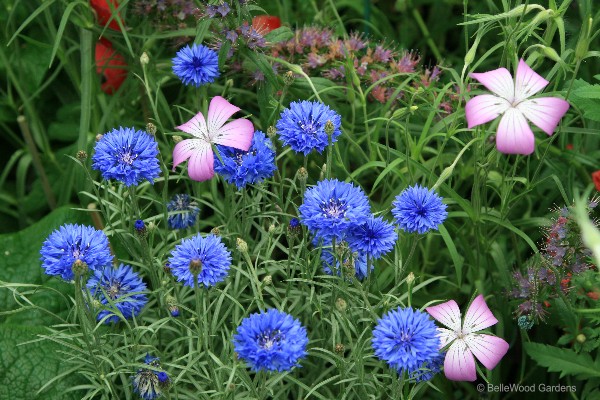
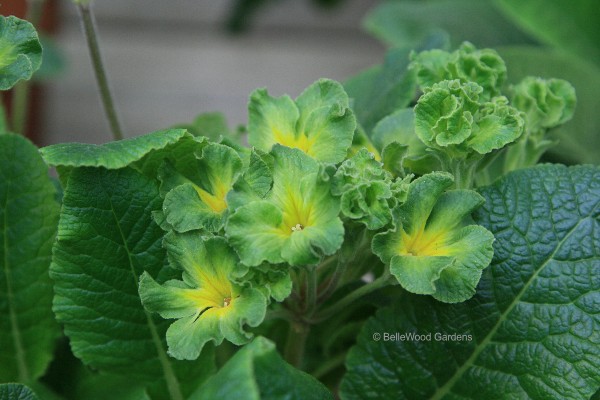
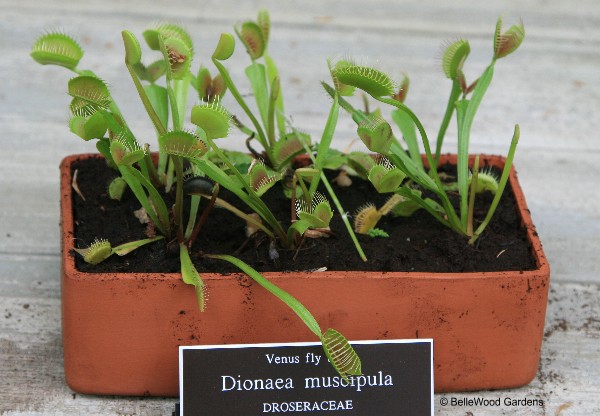
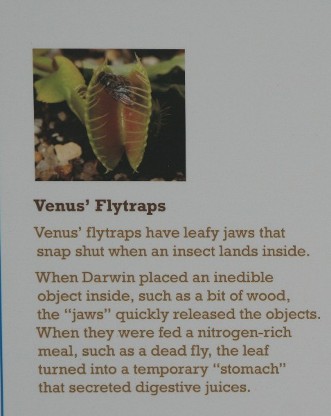
.
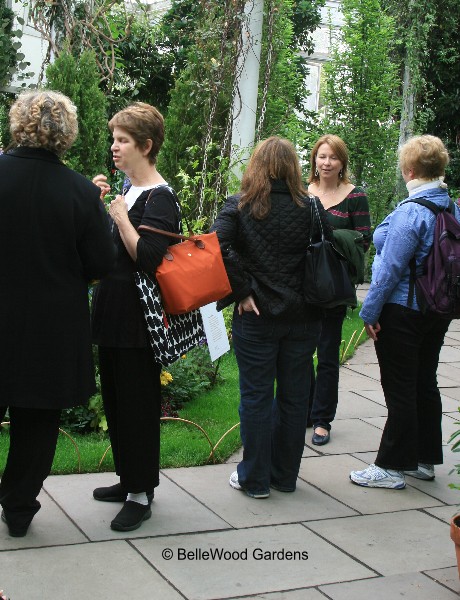
Eventually we managed to tear ourselves away from the wisteria, our senses saturated with dripping swathes of purple flowers and their heady, sensuous perfume. This alone would have been sufficient for a worthwhile visit, but Van Vleck House and Gardens is more than a one trick pony. Dave gave us a wonderful tour, embellished with comments and observations and tidbits of the history that is so intimate a part of this place. Trees and shrubs in bloom, and others just in bud that offer promise of more flowers to come, in a week, in two weeks, later on. Clouds of hemlock pollen like a curtain on a breeze (and all over my car). Little curving paths that coax into another hidden garden . . . .
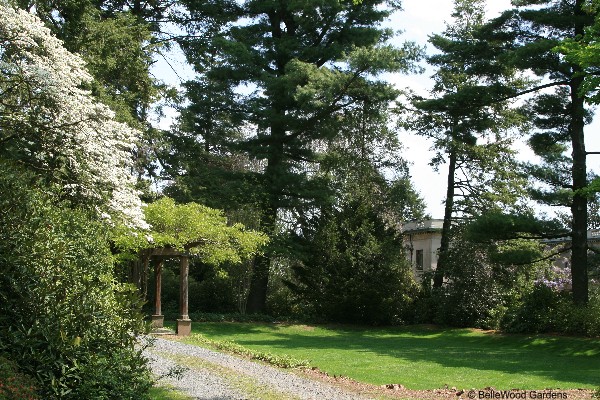
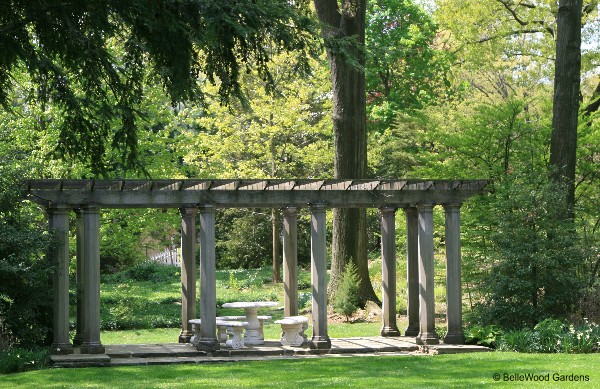
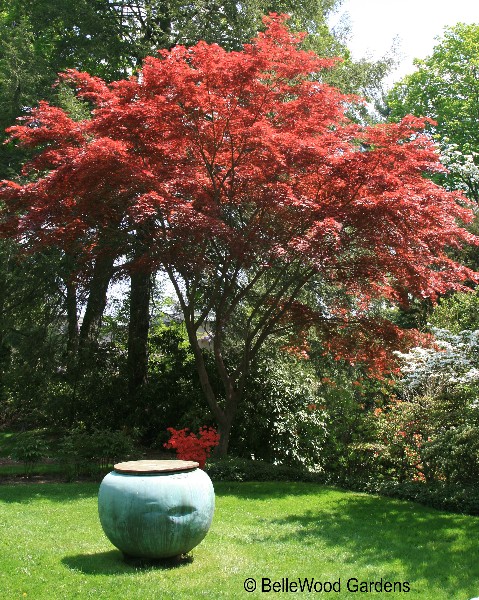
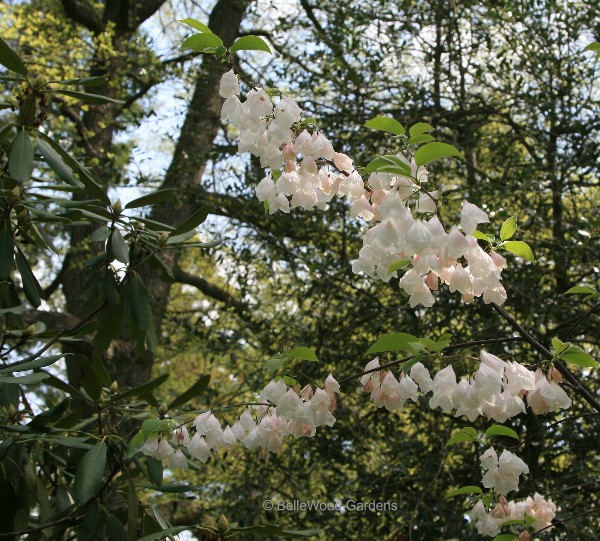
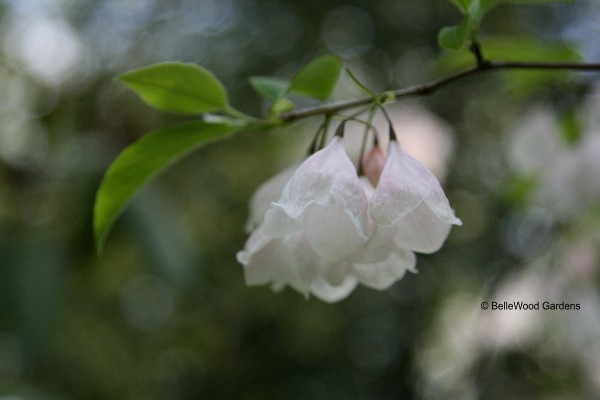
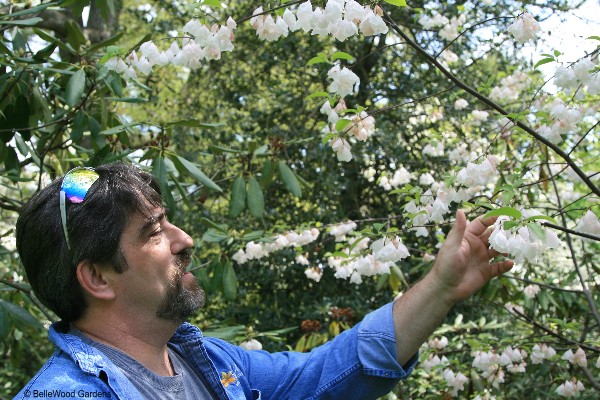
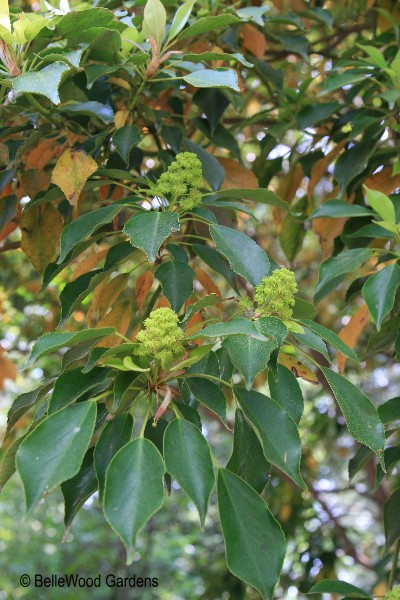
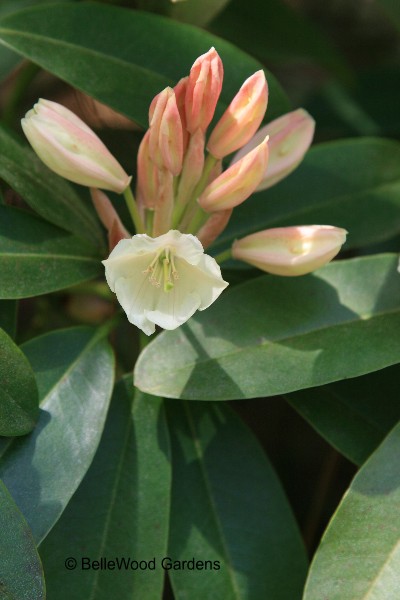
It was late in May 2007 that Mary and I went to Van Vleck House and Gardens in Montclair. There were many rhododendrons in bloom but we were too late for the wisteria. I've been thinking of it ever since. Late in April I started to query Dave Daehnke, Van Vleck's executive director. "Is it time yet? Is the wisteria ready to flower?" Our weather has been somewhat cool, often overcast, then hot. "Around Mother's Day," he said, "sooner if the weather stays in the 80s." And just a few days sooner it was.
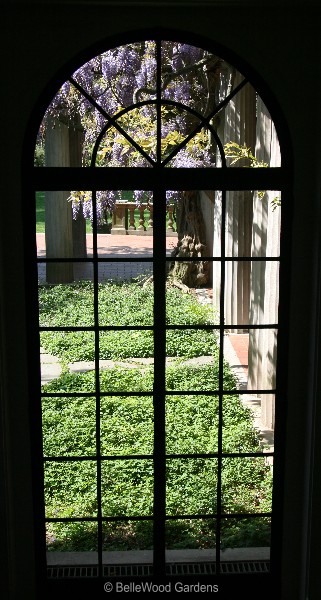
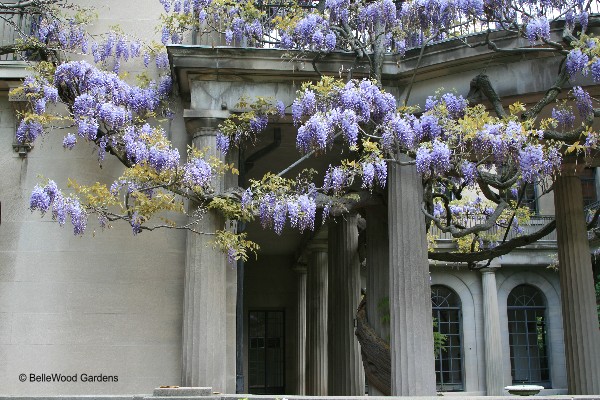
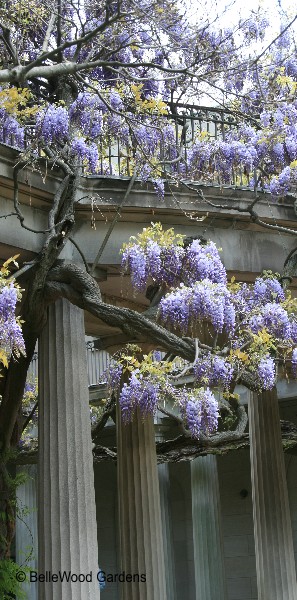
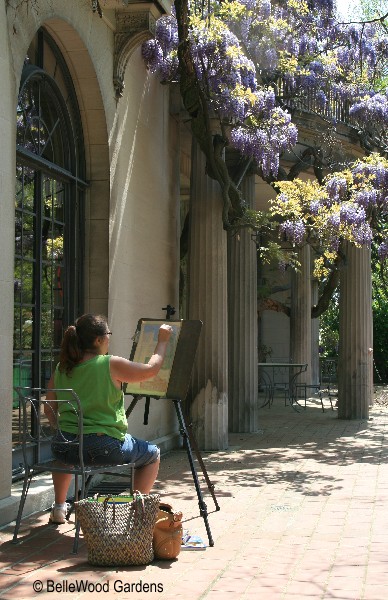
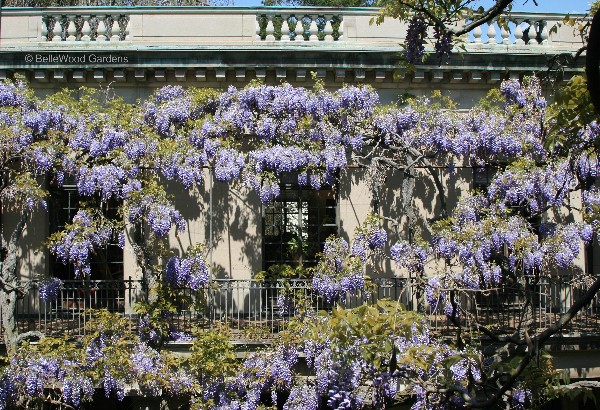
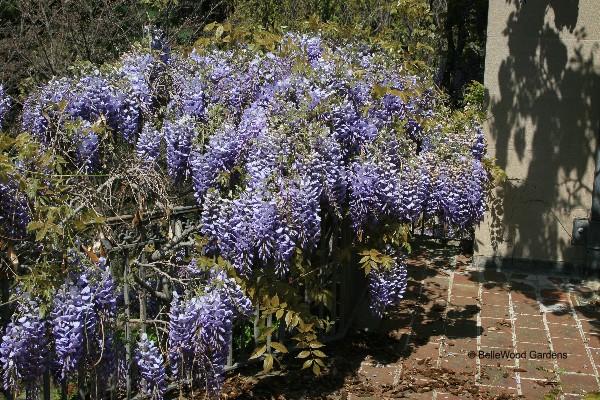
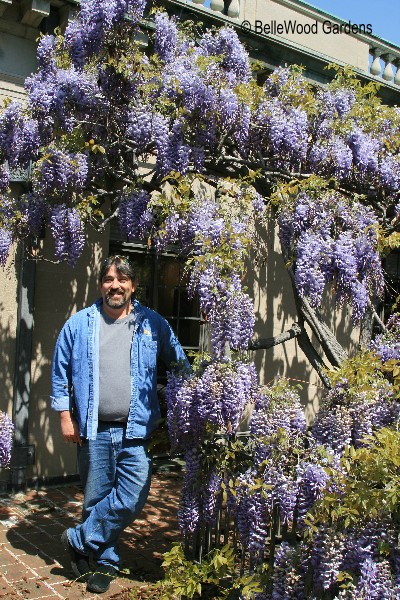
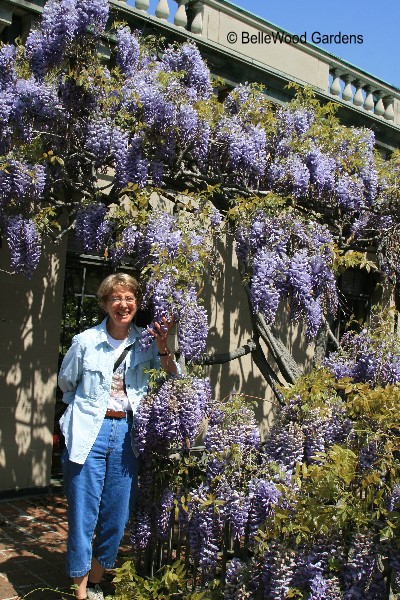
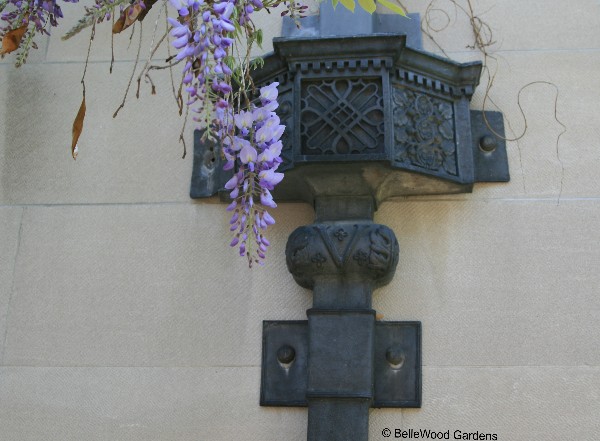
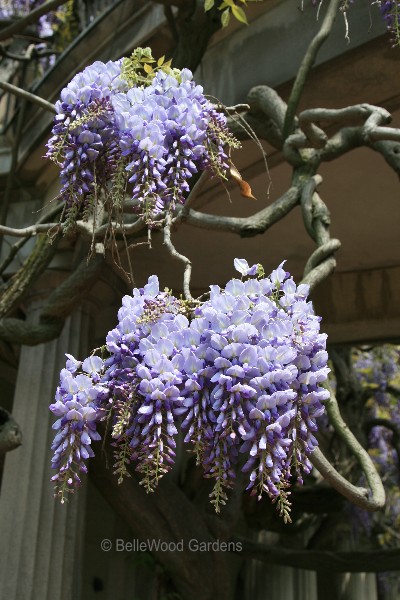
South Jersey that is, in Willingboro. Steve and Melody are again hosting their garden tour, annual plant swap, and pot luck lunch. Having been there before, (May 2006 and scroll down) I'd go just for the tour. The front garden, between modest house, sidewalk and street, is fascinating enough. The winding paths that lead back through the long narrow lot are like an expedition through layers of fascinating plants. Willingboro, you see, is in USDA zone 7. That's milder than BelleWood Gardens' location. And the Silbersteins grow, not merely plants I think of as tender, such as crepe myrtles and southern magnolias, evergreen oak trees and camellias, but variations on whatever theme is typical of a specific plant.

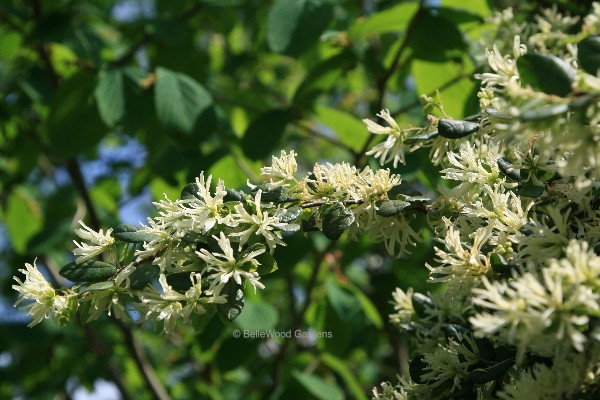
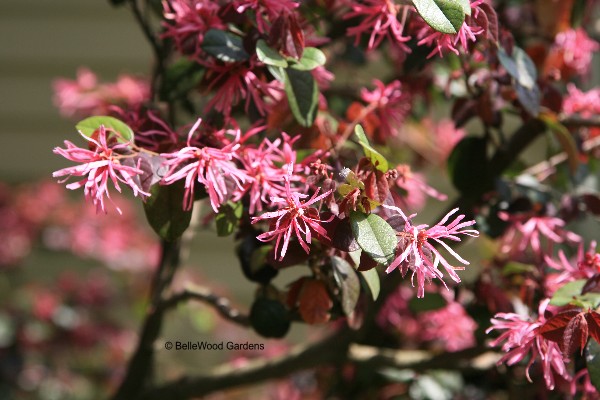
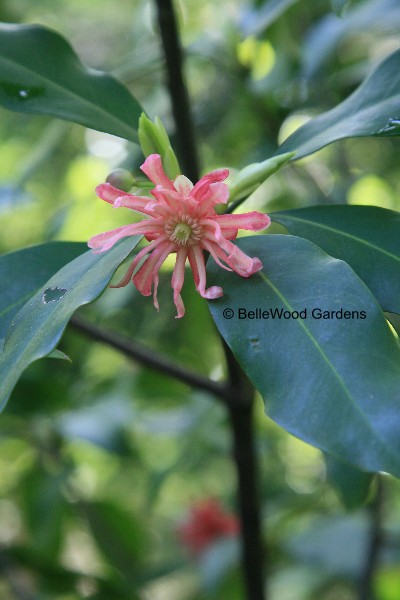
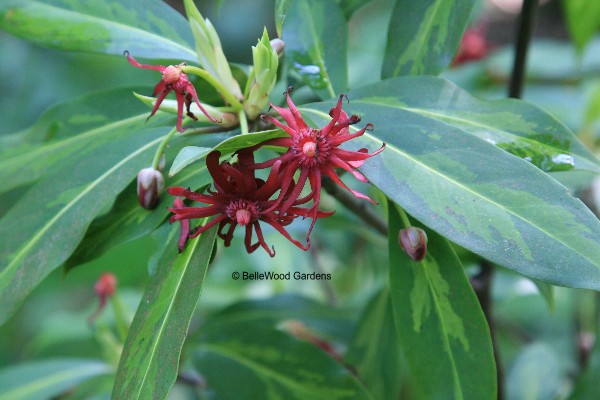
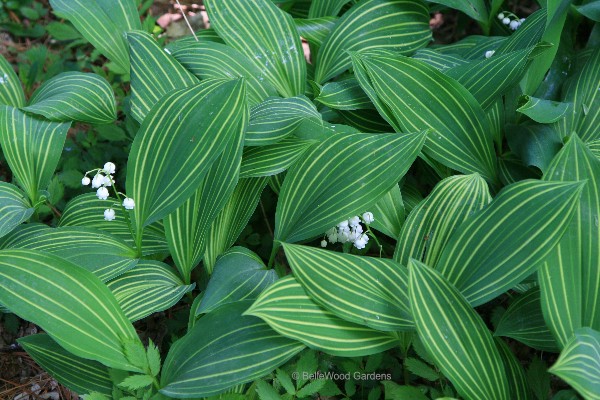
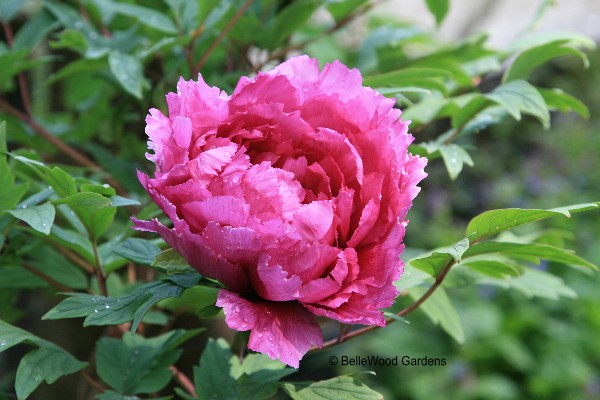
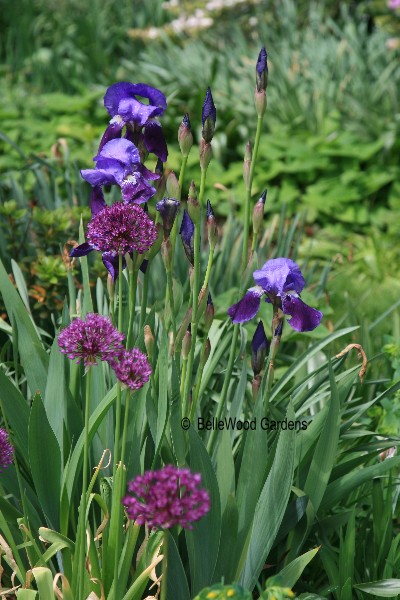
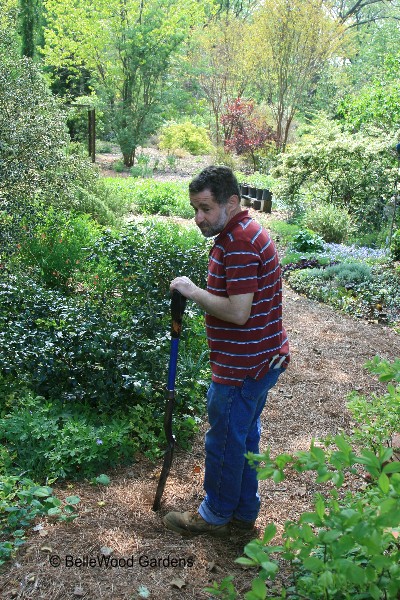
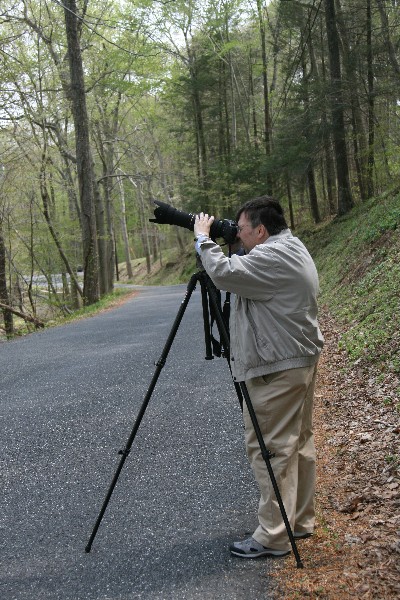
.
